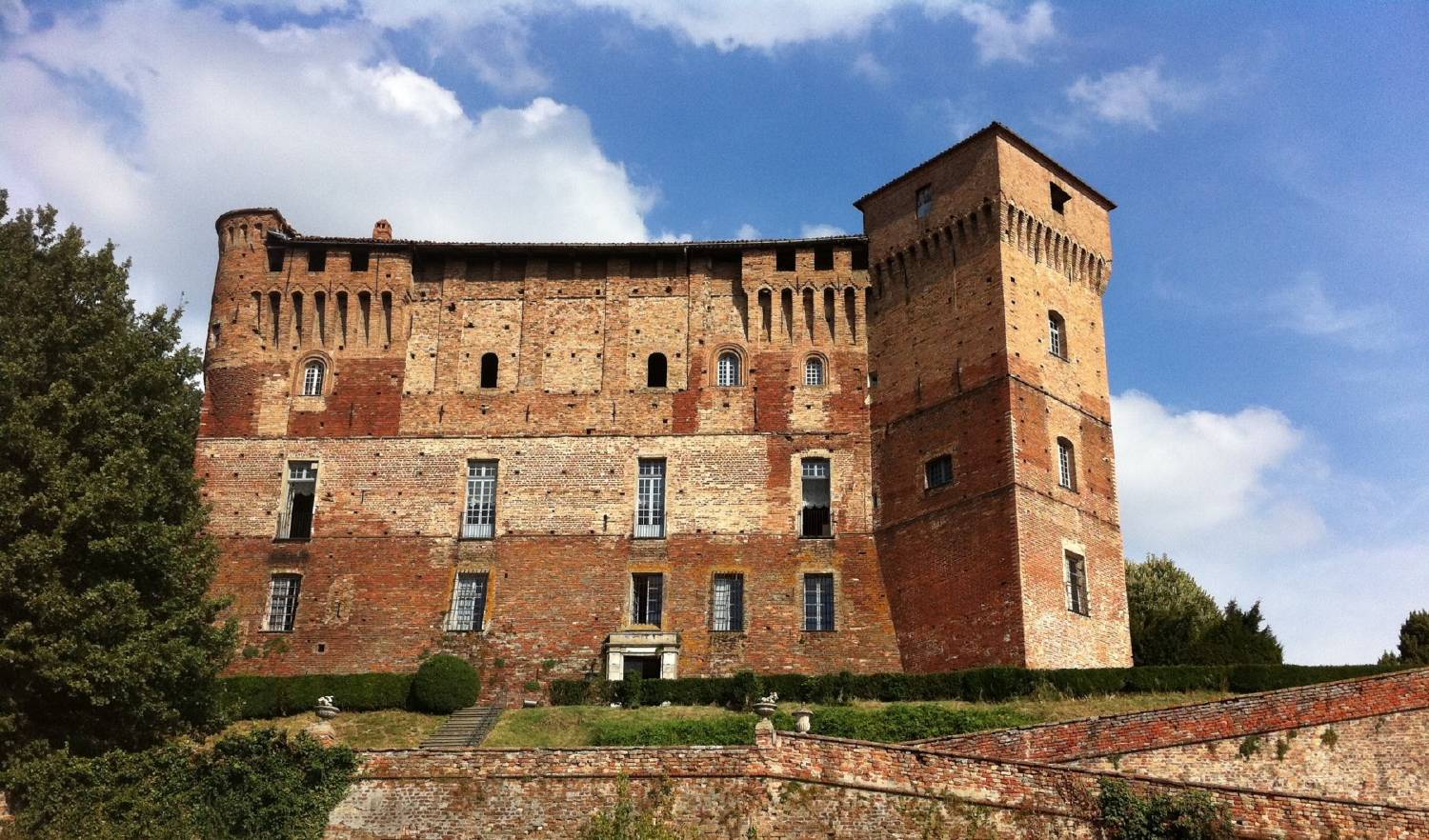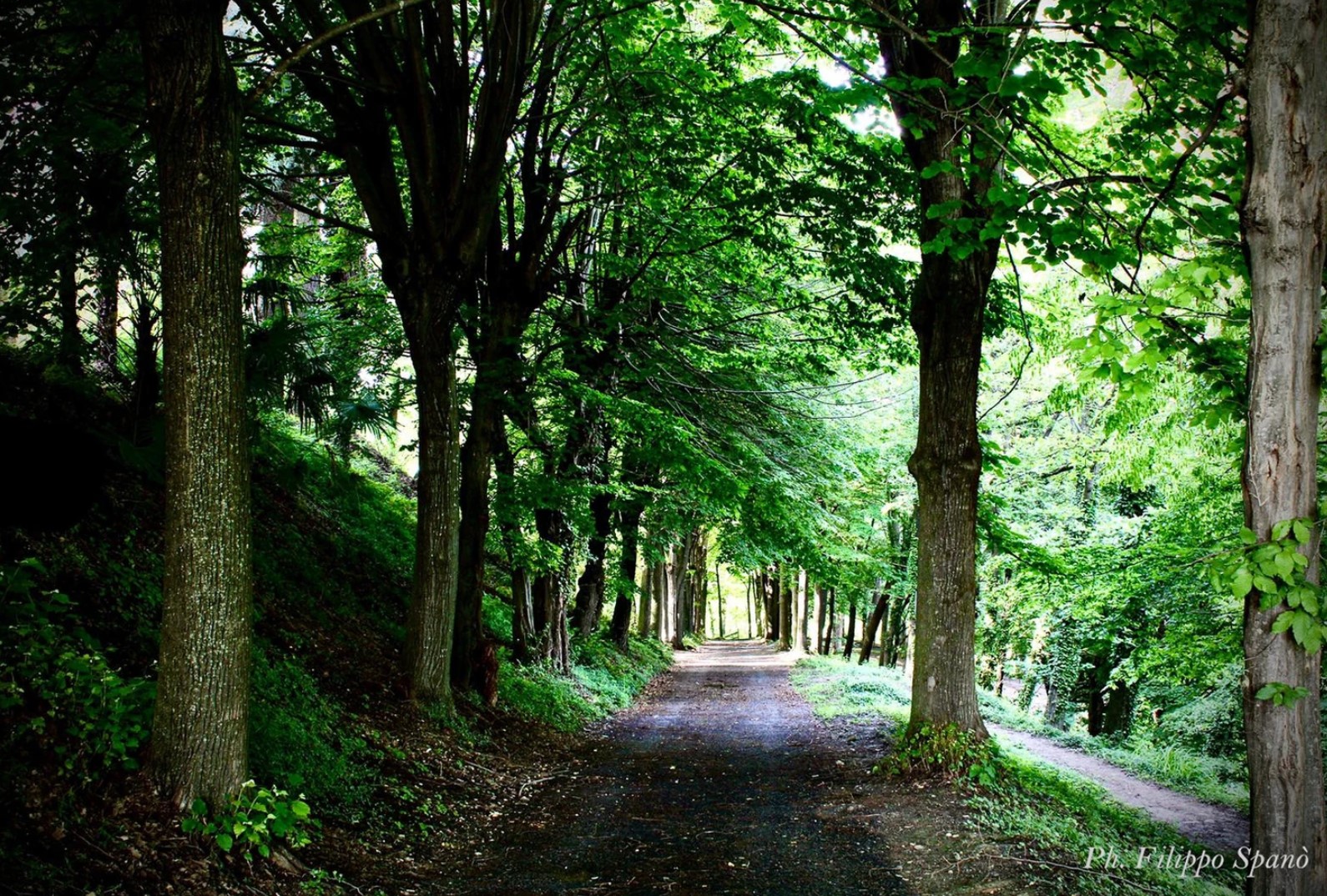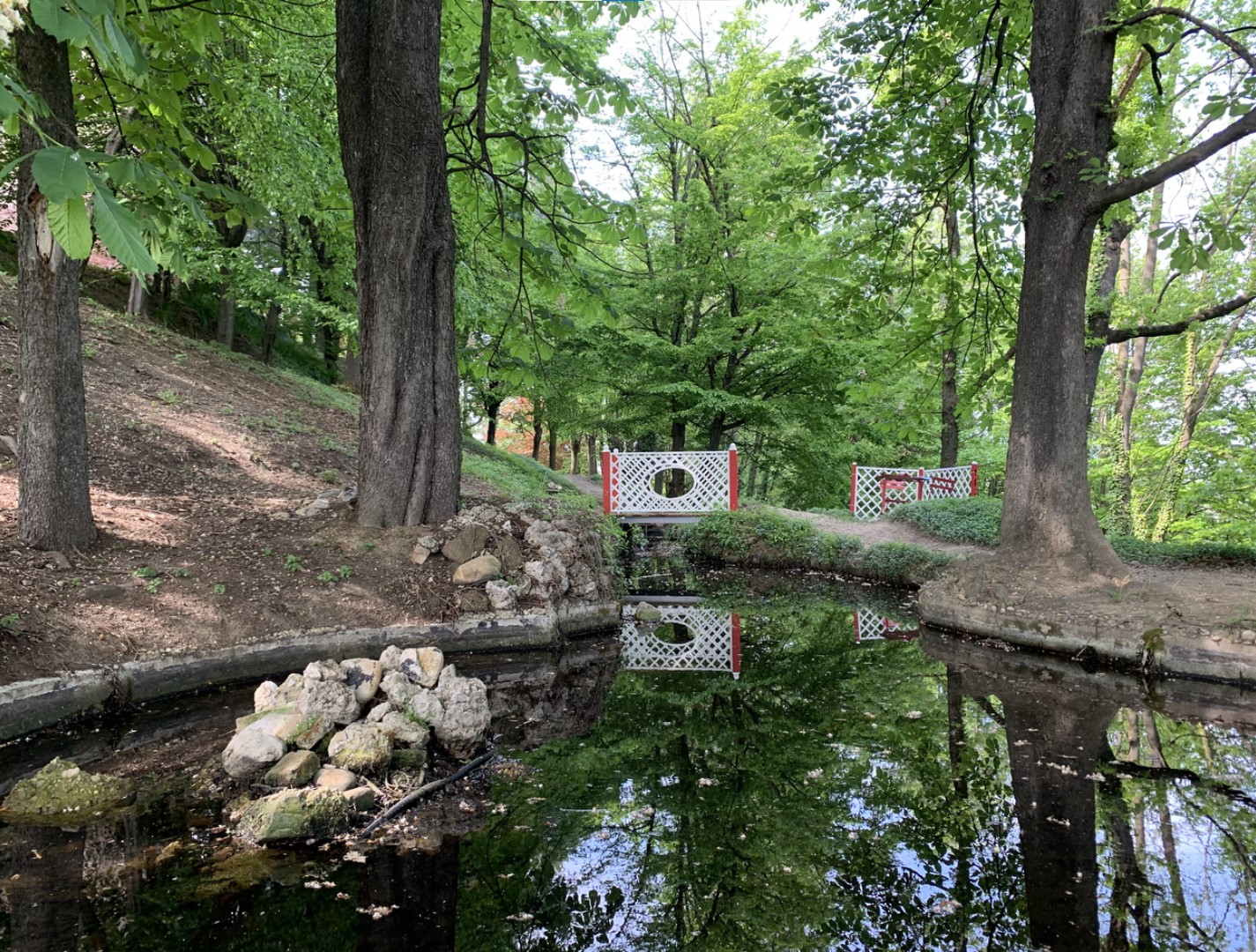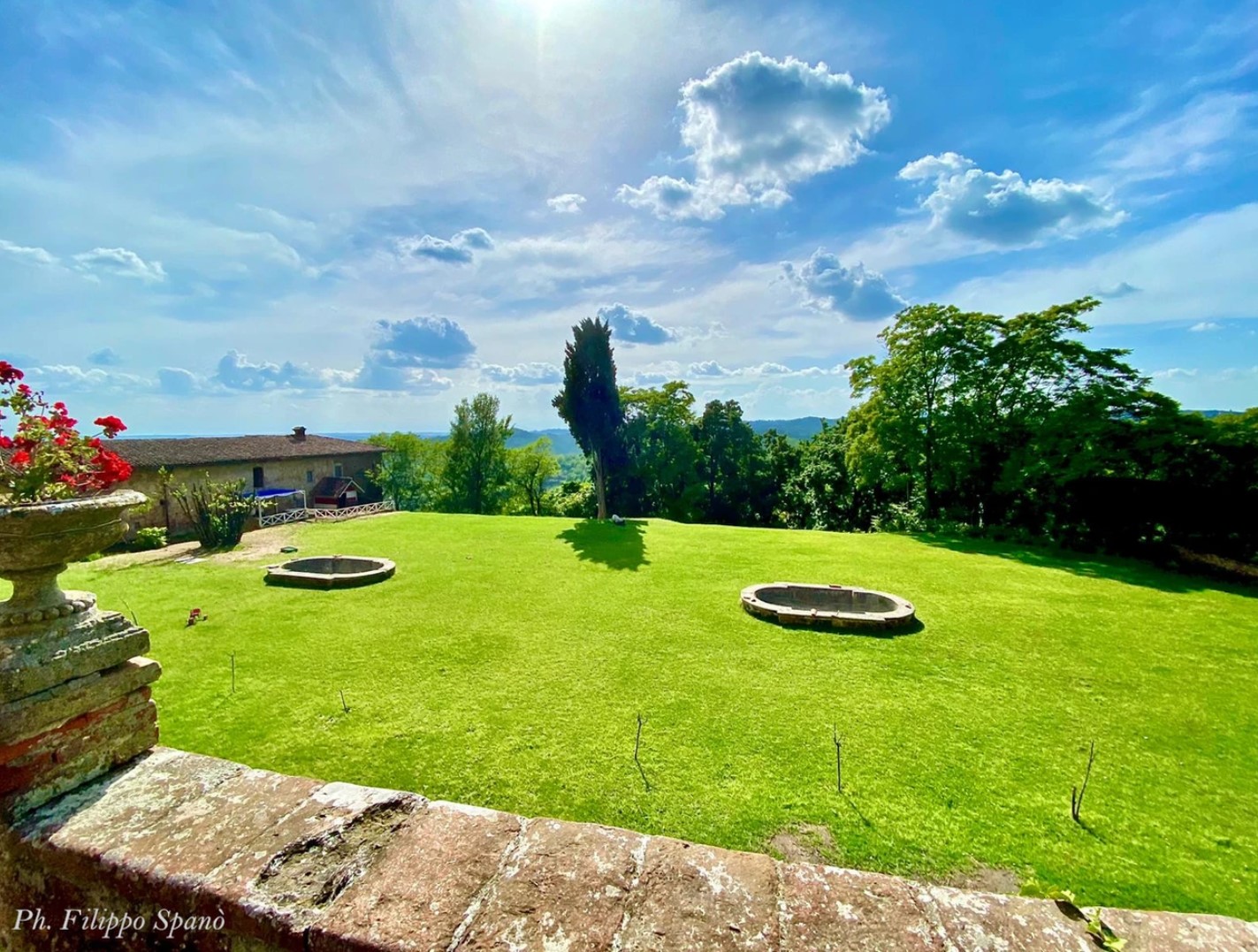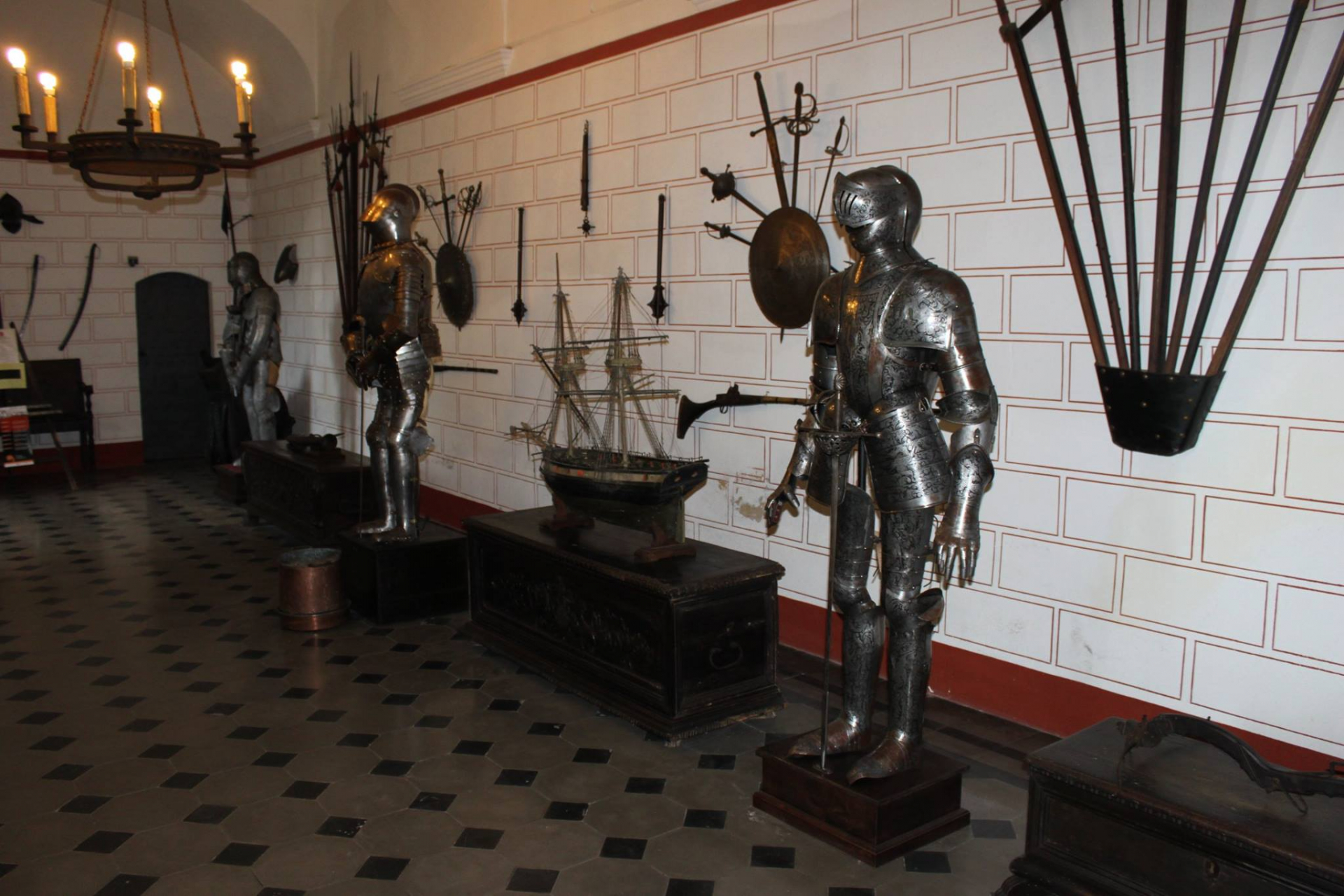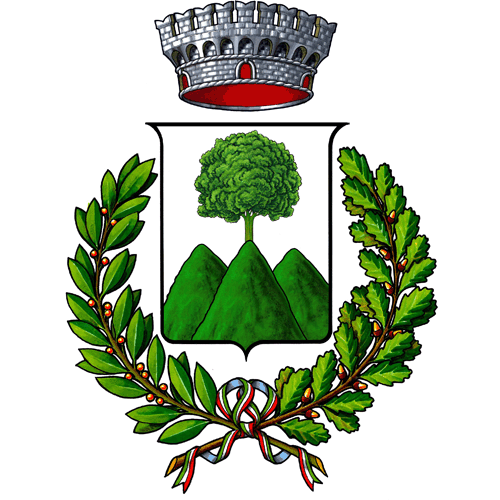
Business Hours
14:00 → 18:00
Contacts
Closing Day
Holidays
First restored in 1348, Monticello Castle is undoubtedly the most effective Roero example of fortified architecture of the period.
The 14th century, a century of Gothic (courtly and chivalrous, dualistic and angular), is marked by structural enrichment in the seigniorial estates in the Roero, albeit quite fragmented territorially.
…still preserved in its original elements, such as the two corner towers, one round and other square, the deep machicolations at the front, at the conclusion of the patrol pass, the ramparts that accentuate the prominence of the monumental structure…
ANDREINA GRISERI – 1974.
Placed at control of the Tanaro valley and related fiefs, the castle initially belonged to the bishops of Asti, undergoing several changes of ownership over the following centuries: in 1237 it passed to the Gorzano d’Asti, in 1341 to the Malabaila, and then to 1376 the Roero began its expansion and gave it its current final layout.
Today the interior partly reflects the appearance of an 18th-century residence, thanks to the intervention of architect Rangone in the years 1785-87.
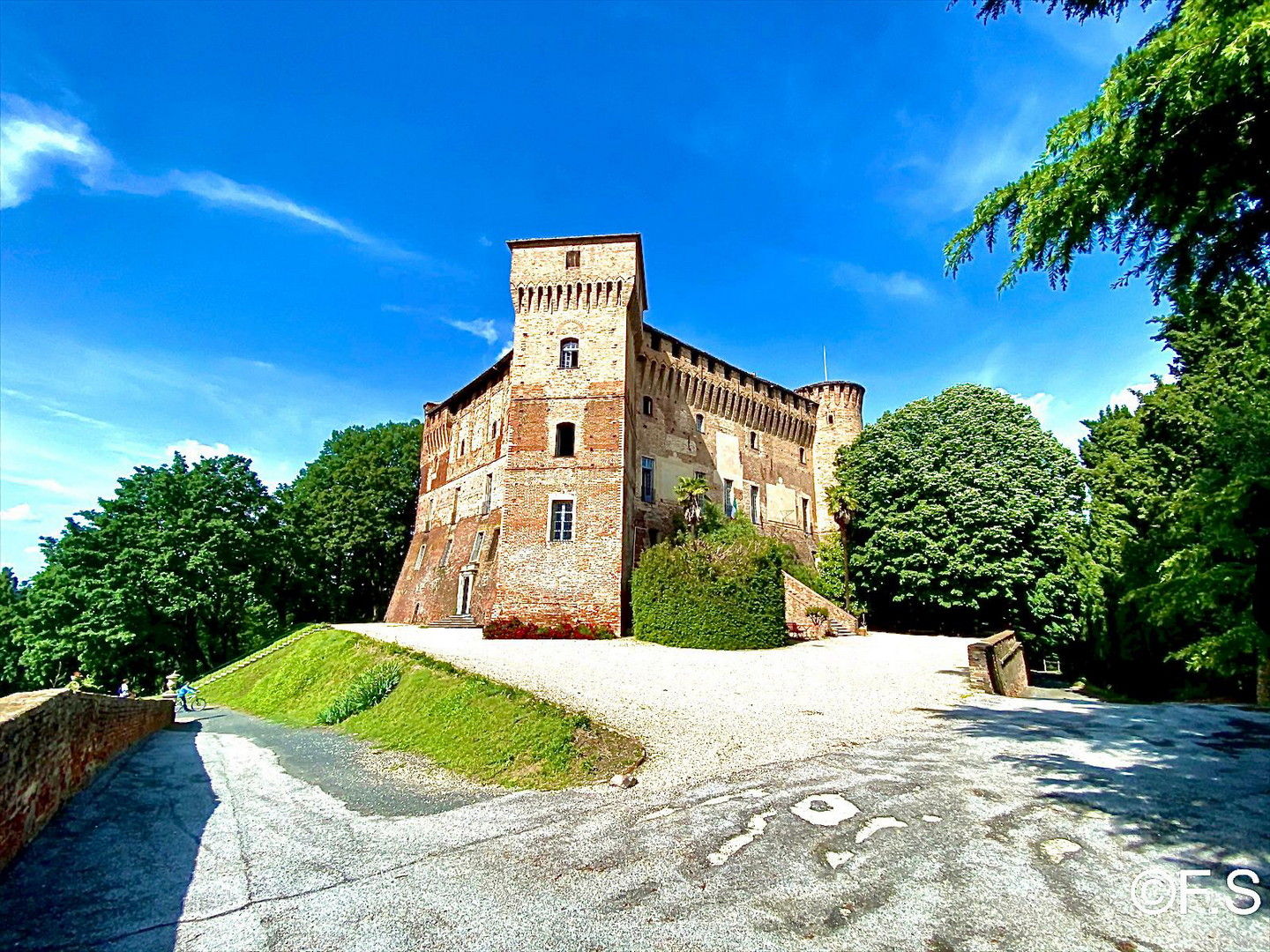
TheHistory
Castle of Monticello
The remarkable medieval construction is documented from 1187, when the consuls of the commune of Alba promised the bishop of Asti to keep it besieged until the lords "de Govono," occupants by feudal concession from the same episcopate, surrendered.
Other documentary mentions are from 1227, 1237, 1332 and 1341, when it was granted as a fief by the bishop to the Malabaila lords.
The reconstruction of this castle, probably by the same household, took place between 1342 and 1348, then again after 1370 by Lodovico Malabaila.
It was then completed by the Astesi lords Roero after 1376, the year in which they reconquered it on behalf of the bishop of Asti and in which it was granted to them with the lordship of the place.
Between 1448 and 1468, various works, commissioned by Oddone II Roero, further supplemented the structure of the manor house, especially by creating the so-called "New Palace" between the south and west sides, as well as the machicolations at the patrol path.
After some seventeenth-century modifications (commissioned by Onorato Roero), considerable works are carried out in 1716-1717 in the west sleeve, commissioned by Countess Laura Veronica Damiano, widow of Count Bernardino Roero.
Then the imposing building is not too much changed even by the interventions of some structural significance, carried out to the design of architect Carlo Francesco Rangone initially commissioned in 1785 by Count Francesco Gennaro Roero in anticipation of his wedding to noblewoman Paola Del Carretto of Gorzegno.
The Exterior
In 1827 the Roero family entrusted the task of remodeling the castle gardens to the renowned German landscape architect Xavier Kurten.
Xavier Kurten worked extensively for the House of Savoy, and is famous for introducing the romantic English garden to Piedmont.
In addition to creating a magnificent English garden, the great architect designed three parallel avenues to the manor house, which can still be traveled today, encircling the hill and staggered by some 20 meters.
The shortest one starts from the gate on Via Castello, the middle one, called “lime tree avenue,” connects the entrance on Via Castello with the one on Piazza San Ponzio, and the third one is called “of the pinnacle” because of the presence of a small circular wooden hut, covered with straw from the Tanaro River, which has disappeared today.
The family is planning to replace it with a Victorian greenhouse that will be used as a tea room.
Xavier Kurten had also designed a rainwater harvesting pond, which was only realized in 2013; 300 square meters wide, it is fed by water from the castle’s gutters.
N° of floors
Park
Visit Duration
Ticket Price
Audioguides
Guided Visit
The Interior
The tour of the castle begins with the Hall of Arms, located on an intermediate level.
The Hall of Arms
Various specimens of armor, spears, swords, clubs, and firearms from different eras are admired in this compartment.
From here you can access the aristocratic chapel of St. Barbara, rebuilt in this location in 1786 at the behest of Count Francesco Gennaro Roero.
In it can be observed, in particular, the 17th-century altarpiece where the titular saint is depicted.
The representation plan
Ascending internally to the castle’s reception floor, one enters the hall of honor.
After visiting the next billiard room, one can enter the 18th-century gallery, rich in fine furnishings and elegantly decorated with a cycle of figured and ornamental frescoes inspired by hunting.
Below is the castle library, equipped with many valuable publications and featuring a large fireplace.
The inner courtyard
Stepping out into the inner courtyard, it is possible to admire the sober, severe composure of the walls with Roero emblems.
They are characterized by the openings with respective round or pointed vaulted arches, two levels of loggias on one side, the access hatch to the cistern below, and the leaning corner turret that houses the spiral staircase to access the upper levels.
The towers
On the top floor of the elevated round tower is located the prison.
The other tower, in notable prominence on the opposite side, is the parallelepiped one, rotated 45 degrees from the edge of the south and west elevations.
Instead, two hanging turrets above conclude the northern front.
N° of rooms
N° of floors
Park
Visit Duration
Ticket Price
Audioguides
Guided Visit
Prices and information
Some useful information for visitors
The visit inside the Castle is preceded by a guide, while the visit to the Park is conducted independently.
Visitors can frame QR codes installed at various points of interest to listen and watch movies directly with the host’s explanation.
Guided tours for groups with more than 15 people are possible year-round by reservation.
It is also possible to book educational workshops for school groups or groups.
Castle + Park
- Full price : 7,50 €
- Reduced price: 4,00 € for children 6 -14 years old
- Family Special: 20,00 € 2 adults + 2 children (6-14 years old)
- Piemonte Valle d’Aosta Museums Subscription holders: 5,00 €
- Groups : 7,00 € minimum 15 people all year round by reservation
- Free of charge: children up to 5 years old, disabled, accompanying groups, journalists and professional guides
Park
- Full price: 2,50 €
Special openings
Tuesday, April 25
Monday, May 1
Thursday, June 1
Friday, June 2
Tuesday, August 15
Monday, October 30
Tuesday, October 31
Wednesday, November 1
Friday, December 8

You can visit the castle with a guide or enjoy the park in relaxation
Are you planning a trip in the Langhe region?
Let us help you design the perfect vacation, and live your stay like a true insider
Free
Service
Ask us
For advice
Free Service
Ask us
For advice
Free Service
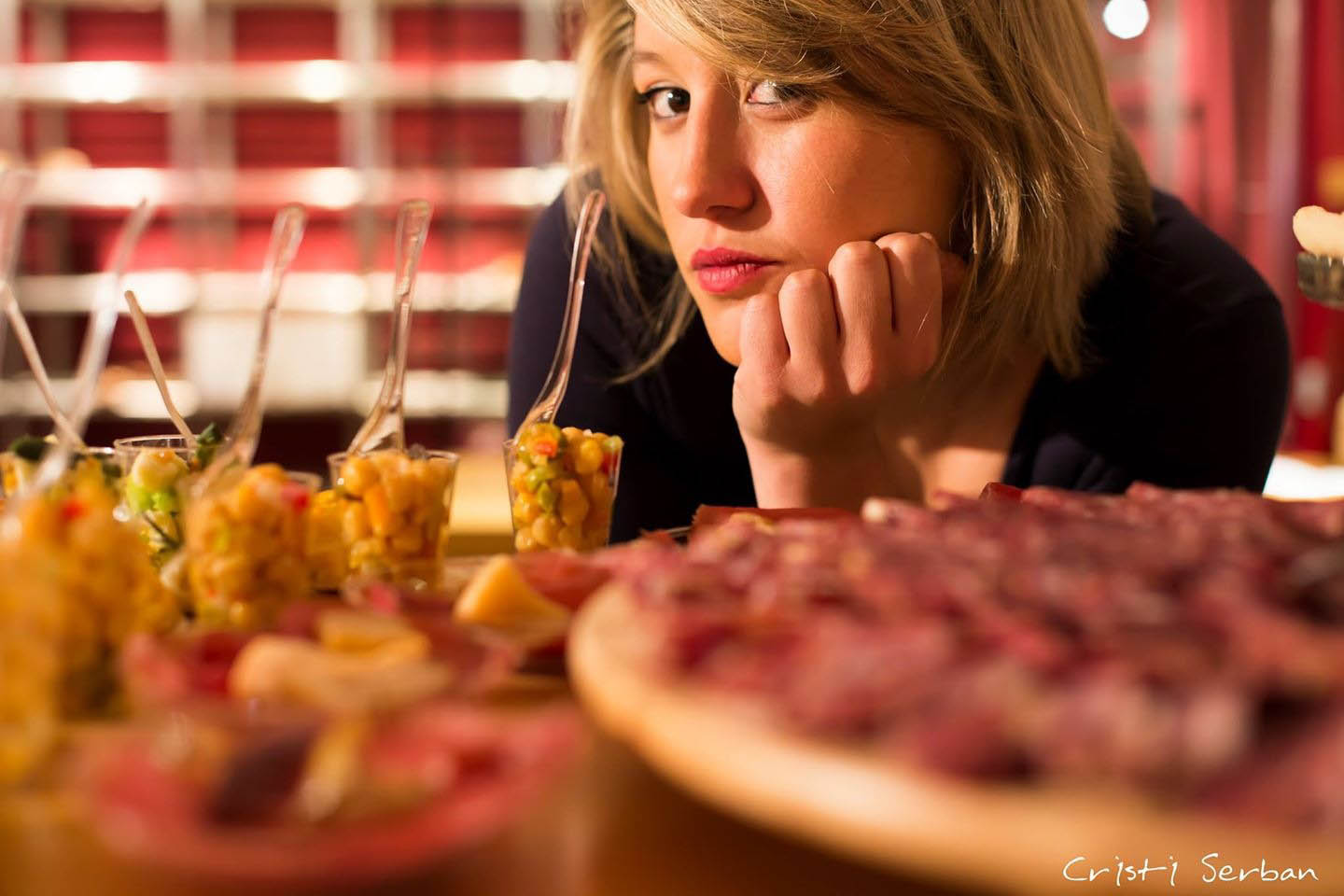
Fill in the form
reporting your interests and preferences
Receive our suggestions
directly into your inbox
And if it's not enough
we'll design a personalized trip!
